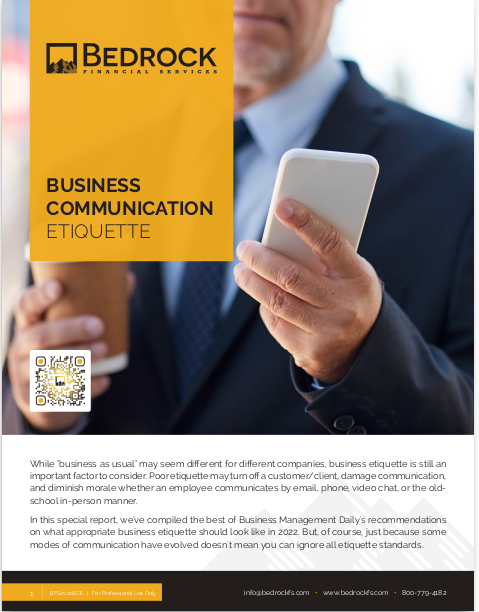Key Takeaways
-
The most widely shared insurance infographics in 2025 have one consistent trait: they translate complex information into instantly understandable visuals.
-
If you want your content to go viral in the insurance world, your infographic must lead with clarity, not just cleverness.
Why Infographics Still Work in 2025
In a content-heavy world where audiences scroll quickly and attention is fleeting, visual communication remains a powerful tool—especially in the insurance space. As an independent agent, you constantly handle concepts that clients find confusing: premiums, coverage gaps, annuities, long-term care, tax implications, and more. Infographics give you a chance to break through that complexity.
But not all infographics perform equally. The ones that get shared, reposted, and referenced? They all have a specific set of attributes that go beyond good design. They educate without overwhelming, guide without pushing, and invite further conversation.
Let’s explore what these infographics have in common and how you can apply the same principles to your client materials.
1. They Begin with a Single, Clear Question
Before these infographics are designed, they start with a guiding question. Something like:
-
“What happens if I outlive my retirement income?”
-
“What does term life vs. whole life really mean for me?”
-
“How much will long-term care cost me at age 80?”
A strong infographic isn’t about packing in information. It’s about answering one meaningful question well. That clarity is what gives it viral power.
How you can use this:
-
Write down the most common questions you hear during consultations.
-
Choose one.
-
Build a visual that answers it.
2. They Use Visual Anchors, Not Just Icons
It’s tempting to scatter icons throughout your infographic and call it a day. But high-performing infographics do something more: they rely on visual anchors to guide the eye.
A visual anchor could be:
-
A timeline showing how coverage changes with age
-
A step-by-step funnel explaining eligibility
-
A side-by-side chart that compares tax treatment over decades
These anchors give your viewers a path to follow. They create logic through layout—not just content.
Quick tip: Design your infographic so someone could understand the flow even without reading all the text.
3. They Prioritize Emotional Relevance
Sharing is emotional. People share things that reflect their values or concerns.
The most shared insurance infographics connect with what your clients care about most:
-
Peace of mind for their children
-
The fear of financial instability
-
Confidence that they won’t be a burden
Even when the infographic covers logical, financial concepts, the design highlights what those numbers mean emotionally.
Add emotional framing: Instead of saying, “Coverage increases by 5%,” try, “That 5% could cover your child’s tuition.”
4. They Make One Strong Point per Section
Every section of your infographic should feel like a standalone insight. If someone were to screenshot just that portion and share it, it should still carry weight.
What works:
-
Clear headers that guide attention
-
One chart or graph per idea
-
Bullet points instead of blocks of text
This modularity is what makes an infographic more shareable. You’re creating multiple micro-messages that can be reused in social posts, email newsletters, or workshop slides.
Structure tip: Limit yourself to 4–6 sections. That constraint forces clarity.
5. They Include Realistic Numbers (Without Overpromising)
Numbers build credibility, but only when they feel grounded. Overly optimistic figures, vague averages, or exaggerated cost savings all reduce trust—and with it, shareability.
Stick with conservative, general estimates where applicable. In 2025, for instance:
-
The average monthly cost of long-term care ranges from $4,000 to $9,000 depending on care type.
-
Medicare Part B has a monthly premium of $185 and a $257 deductible.
-
Out-of-pocket maximums under many government health plans can reach $7,500 to $15,000 annually.
Use these as anchor figures in your visuals—but never tie them to specific providers.
Balance trust and engagement: People are more likely to share a post if they believe it’s honest.
6. They Are Optimized for Vertical Viewing
In 2025, over 85% of insurance content views happen on mobile.
That means your infographic must be designed for a vertical screen:
-
Tall layout, not wide
-
Readable fonts (14pt+ recommended)
-
Space between sections so users can pause and absorb
Infographics that are too dense or designed for desktop viewing rarely get shared. They get skipped.
Best layout style: Think of your infographic as a visual scroll—not a poster.
7. They Invite the Viewer to Take One Small Step
The best-performing infographics end with a tiny call-to-action that isn’t pushy.
It could be:
-
“Ask your agent how this applies to your situation”
-
“Screenshot this and save it for your annual review”
-
“Check your policy for these 3 clauses”
You’re not pitching a product. You’re offering a next step that builds curiosity and trust.
When clients feel invited—not pressured—they’re more likely to act.
8. They Are Designed to Be Shared Without Needing You
One overlooked trait of the most viral insurance infographics is this: they make sense even when disconnected from your brand.
That doesn’t mean you should remove your name—quite the opposite. But it does mean:
-
No jargon that requires a call to understand
-
No “teaser” language that withholds info
-
No dependency on your website to make the image useful
People share what makes them look helpful. Give them that tool.
Keep branding subtle but present: A logo, URL, and your contact line in the footer is enough.
9. They Are Refreshed, Not Recycled
What worked in 2022 might not hit the same way now. Shared infographics evolve over time. The most viral ones are regularly updated to reflect:
-
New Medicare changes (like the $2,000 out-of-pocket Part D cap in 2025)
-
Income tax bracket shifts
-
COLA adjustments or Social Security updates
Set a reminder to refresh your top-performing visuals every 6 to 12 months.
Pro move: Update the layout or color scheme when reposting. Even small changes signal newness.
10. They Are Shared by Other Professionals
The most powerful shares don’t come from your clients. They come from other professionals in your ecosystem:
-
CPAs
-
Financial advisors
-
Estate attorneys
When your infographic is useful to their clients, they share it—and your reach multiplies.
Build relationships: Send a quarterly infographic to your professional network with a note: “Feel free to pass along if it helps.”
Use Infographics to Start, Not End, the Conversation
If there’s one thread running through all successful insurance infographics, it’s this: they aren’t about getting a client to buy. They’re about helping a client ask.
You don’t need the perfect graphic. You need one visual that makes someone stop scrolling and say, “Wait… is that true for me?”
When your visuals open the door to thoughtful conversations, you stop selling and start collaborating.
We at Bedrock Financial Services are here to support that shift. From content tools to branding strategies and automation, we help independent agents like you turn visuals into opportunities. If you want to explore how we can support your growth, sign up and see what Bedrock can unlock for your business.







